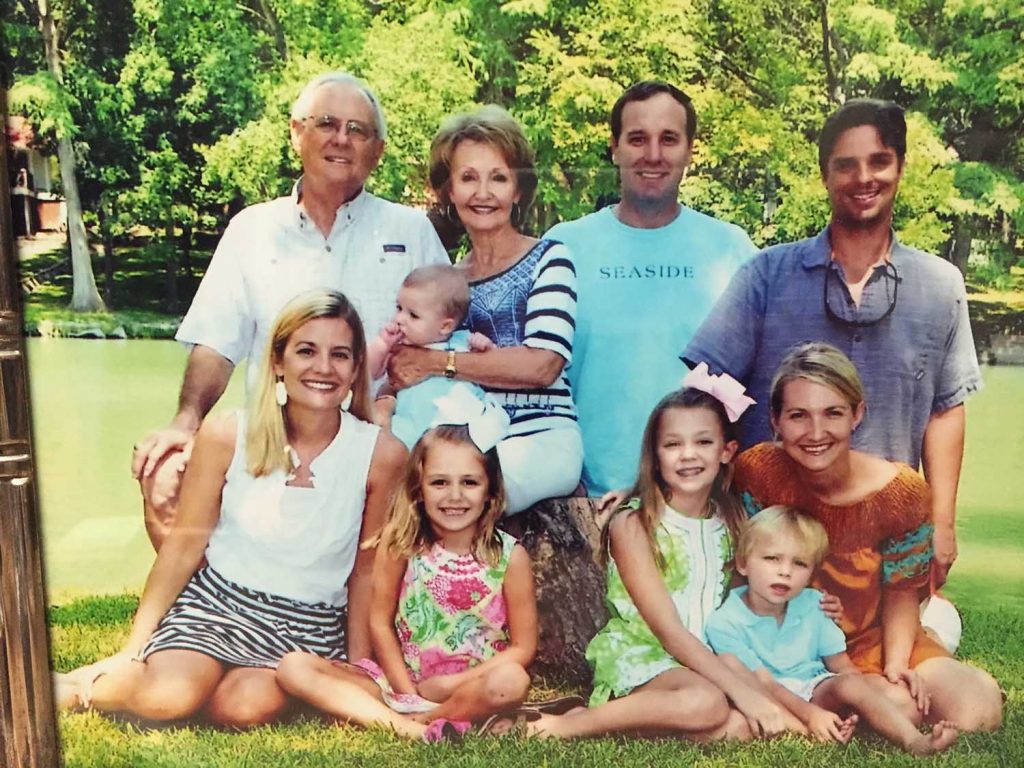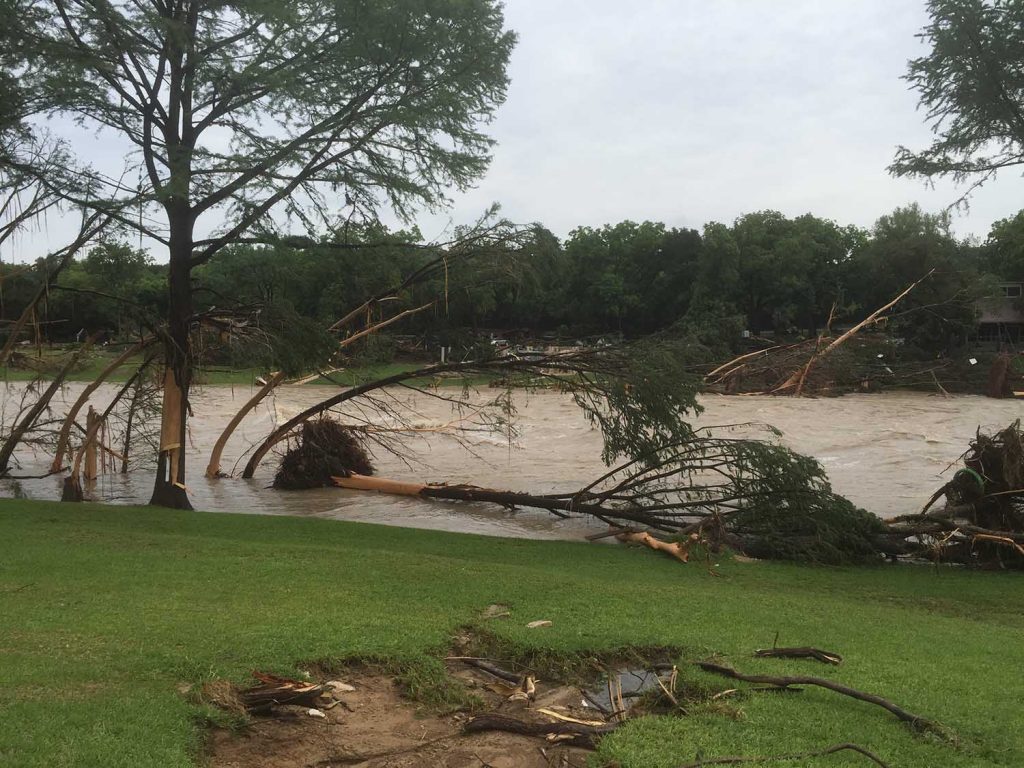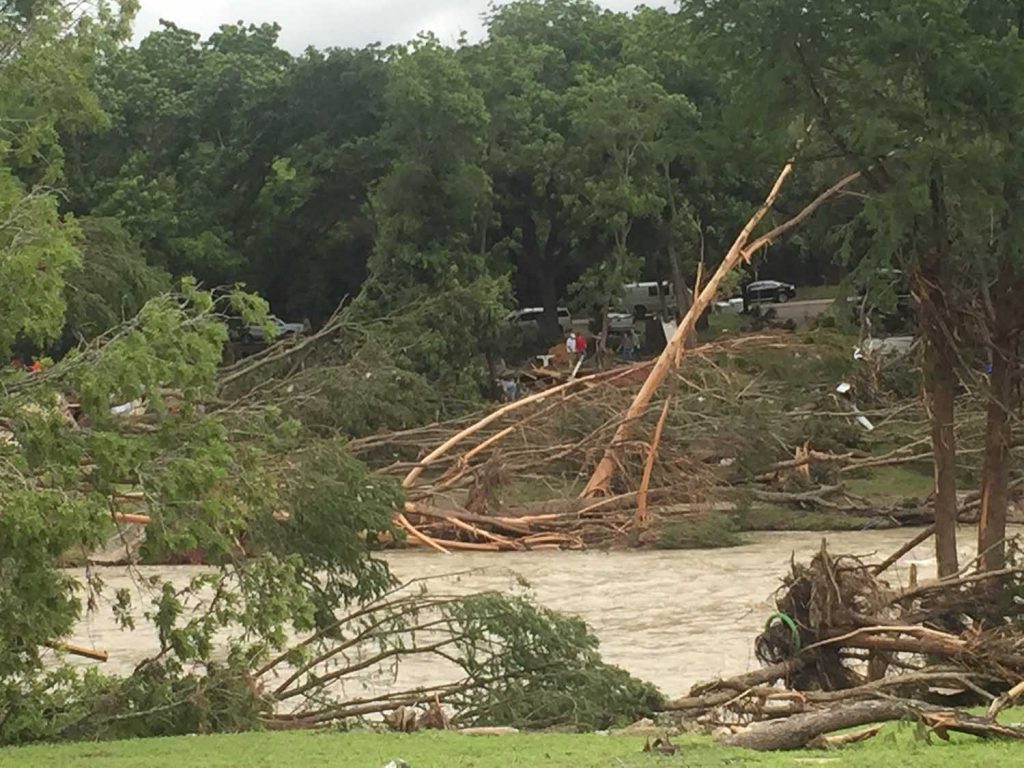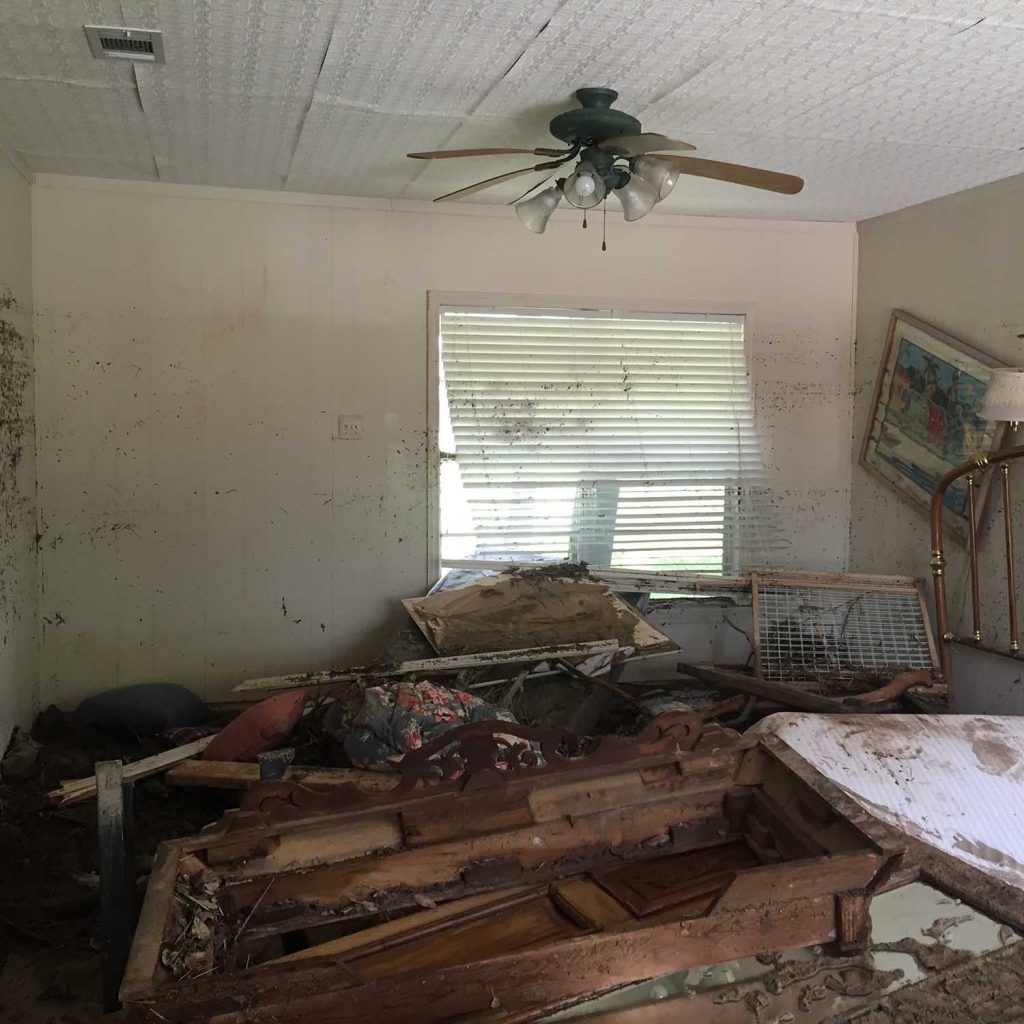During the writing of this article in mid-June, the town of Wimberley in Hays County was once again under a flash flood watch, which included the following warning: “Very saturated soils will further enhance the possibility for flash flooding and increase the likelihood of rapid flooding.”
RAPID FLOODING. The first-year anniversary of the catastrophic Blanco River Memorial Day 2015 weekend flood has just passed, and to some the words RAPID FLOODING still elicit a physiological response.
One can only imagine the tears and chills still felt by those directly affected by tragic loss. Last year the eyes of the nation turned toward Hays County during the heartbreaking search for the missing, including eight weekenders who vanished into the bulging river after roaring waters pulled their vacation home off its pilings and into the river, where it eventually crashed into a bridge. The lone survivor, Jonathan McComb, lost his wife, Laura Schultz McComb, 6-year-old son Andrew and 4-year-old daughter Leighton in the floods. Jonathan’s father, former Nueces County Commissioner Joe McComb, was by his son’s hospital bedside during the search for his daughter-in-law and grandchildren and provided periodic updates to the media. While Laura and Andrew were eventually found, Leighton’s body was never recovered.
One Year Later
Over 12 months have passed, and the following statistic is still difficult to believe: The Blanco River at Wimberley rose more than 30 feet in less than three hours and set a new record high crest of 40-plus feet before floodwaters disabled the flood gauge.
Jackson County Judge Dennis Simons’ vacation home sits up on a bluff some 2 miles downriver from the home that plunged into the waters. There were 10 sleeping in the Simons’ home that same evening: Dennis and his wife, Kay; their daughter Ann, her husband and their two daughters, ages 8 and 11; and another couple with two small children. The Simons’ other daughter and family were set to arrive the next day.
Rain had been falling on and off most of the afternoon that Saturday, May 23, Judge Simons recalled, but the drops didn’t put a damper on the group’s outdoor activities.
“In fact, Wimberley just received between 3 inches and 4 inches of rain that day,” Simons detailed. As night fell, the rain fell harder, “but not at an alarming rate.
“After dark we began receiving flood alerts on our cell phones and were cautiously watching the river, but it was barely out of its banks and was not rising that fast,” Simons shared. “We had no idea of the wall of water that was coming toward us.”
The couple and their houseguests retired about 11 p.m., but Simons woke up about midnight when the electricity went out. At first, everything was calm and quiet.
“As I was trying to go back to sleep, I started hearing strange banging noises outside and could not figure out what it was,” Simons remembered. “When I got up, I discovered that our dog houses were floating and banging against the side of the house. I knew the water was higher than I had ever seen it before and thought that the worst was over and it would begin receding. The rain had stopped, and nobody thought it would rise any higher. At that point it had about 5 more feet to rise and get into the house.”
About 1 a.m. Dennis and Kay noticed that the water was continuing to rise very rapidly.
“Kay and I got everyone up, and they were outside and in the cars in a matter of minutes. Kay went back to the bedroom to get her purse. At that point, the water was a few inches deep in the house,” Simons recounted. “She got disoriented in the dark and couldn’t find the door to get out. The water rushing in had closed it behind her. I managed to get the door open and lodged a piece of furniture in it to keep it open. By the time we both got out of the house, the water was up to our knees and still rising.”
Sights and Sounds
The Simons household along with some 15-20 other families in the area along with their pets evacuated to a ranch across the road from their homes. They also drove their vehicles to higher ground, some 250 yards behind the row of homes.
“After we got settled in everyone got very quiet. You could hear the roar of the river, but you also could hear loud creaking and popping sounds, along with the sound of breaking glass. We could only imagine what was happening.”
The group sat in collective shock in the pitch black while sleep eluded them.
“There was nothing to do but wait,” Simons recalled, “and we had no idea what was waiting for us. Our family was all together, and that’s all that mattered.”
Sometime between 3:30 or 4 a.m., the water began to recede, and Dennis Simons, his daughter and son-in-law walked back to the home with flashlights. Still, they were not able to accurately survey the damage until about 6:15 a.m. when the sun began to rise.
Evacuees started driving slowly back toward their homes; while the river continued to roar, the waters had receded well below their homes.
“Everyone drove up to the flooded houses and stood in silence to take it all in,” Simons recounted. “It was hard to comprehend what we were seeing. Houses were either severely damaged or completely gone. Trees down or uprooted.”
Specifically, the Simons’ home was still standing and structurally sound, but all of the windows were knocked out, and 6 feet of rushing water had gone through their home. Many of their belongings had washed out of the windows into the river, and what remained was destroyed.
However, most importantly, no one was hurt.
The Simons are now in the process of rebuilding their home, which had to be stripped down to the studs on the inside and will require new electricity, air, appliances, cabinets, etc.
“Fortunately, this was a weekend house and not our home,” Simons indicated. “We have been inconvenienced, but that is nothing compared to some neighbors that have been living in campers while their rebuild is being completed. Our project is coming to an end and should be completed within the next month.”
In the weeks and months following Memorial Day, Dennis and Kay Simons realized just how close they came to being trapped in the home.
“The more time we have had to reflect on it, the more thankful we are that our family was safe and uninjured,” Simons declared.
The family was also thankful and touched by the outpouring of help from volunteers throughout the state.
“They showed by the busload for several weeks after the flood to help with cleanup,” Simons detailed. “They helped remove all of the personal items from the house, shoveled mud, removed carpet, sheetrock, appliances. – basically they were there to do whatever was necessary.”
Other groups provided both the flood victims and volunteers with hot meals, water and cleaning supplies.
“It restored our faith in humanity to know that so many people cared and were willing to sacrifice their time and energy to help strangers in a time of need,” Simons remarked.
When it comes to lessons learned, Simons said he “will never take flood warnings lightly again and will always have an evacuation plan in mind.”
During the hours leading up to the historic flood, the Simons received warnings of flooding and calls for evacuations on both their cell phones and landlines.
However, like the majority along the banks that night, the Simons were confident that their home would be safe.
“Nobody envisioned the magnitude of the flood, since it was a historical flood,” Simons stated. “All of the people along the river had seen the Blanco flood over the years and felt confident that the river would never rise that additional 10 or 15 feet that it did.”
While their weekend home was lost and their belongings – including pictures and family keepsakes – were destroyed, Dennis and Kay Simons are incredibly thankful. Ten people were sleeping in the Simons home that night, and all 10 survived.
“Events like this make you realize how precious family is,” Simons shared, “and how family should never be taken for granted.





















